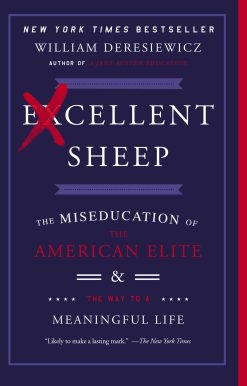Games for Reading: Playful Ways to Help Your Child Read
15.00 JOD
Please allow 2 – 5 weeks for delivery of this item
Description
HERE ARE OVER SEVENTY GAMES TO HELP YOUR CHILD LEARN TO READ–AND LOVE IT.Peggy Kaye’s Games for Reading helps children read by doing just what kids like best: playing games. There is a “bingo” game that helps children learn vocabulary. There is a rhyming game that helps them hear letter sounds more accurately. There are mazes and puzzles, games that train the eye to see patterns of letters, games that train the ear so a child can sound out words, games that awaken a child’s imagination and creativity, and games that provide the right spark to fire a child’s enthusiasm for reading. There are games in which your child has to act silly and games–sure to be any child’s favorite–in which you do.Easy to follow and easy to play, these games are ideal for busy, working parents. You can read a game in a few minutes and start to play right away. You can play on car trips, while doing the laundry, or while cooking. These games are so much fun for the whole family that you may forget their serious purpose. But they will help all beginning readers–those who have reading problems and those who do not–learn to read and want to read.Games for Reading also includes a list of easy-to-read books and books for reading aloud, and a “Note to Teachers” on how to play these games in their classrooms.
Additional information
| Weight | 0.5 kg |
|---|---|
| Dimensions | 1.33 × 20.86 × 18.95 cm |
| PubliCanadation City/Country | USA |
| by | |
| Format | Paperback |
| Language | |
| Pages | 240 |
| Publisher | |
| Year Published | 1984-6-12 |
| Imprint | |
| ISBN 10 | 0394721497 |
| Table Of Content | Acknowledgments • ixIntroduction • xiPART ONE: Games for Learning Words • 1Chapter One: Words Everywhere • 2 GIFT WORDS • 4 POSTER WORDS • 6 3-D WORDS • 8 JUMBO WORDS • 10 WORD COLLECTION BOX • 11 WORD HUNT • 13 CHARADE CARDS • 16 PICTURE LABELS • 18 LABEL THE HOUSE • 20 BODY WORDS • 23Chapter Two: Games for the Eye • 24 MAZES • 26 JIGSAW PUZZLES • 30 BLINDFOLD DRAWING • 33 FIND IT • 35 PICTURE MEMORY • 37 HOW DO I LOOK? • 38 SET THE TABLE • 39 TWO DRAWING GAMES • 42 A MUCH HARDER DRAWING GAME • 45 LETTER CONTEST • 48 SAME AND DIFFERENT • 50Chapter Three: Word Games • 52 RAINBOW GAME • 53 WORD LADDER • 55 WORD CONCENTRATION • 58 WORD BINGO • 61 GOOFY SENTENCES • 64 JIGSAW SENTENCES • 67 ZIP CARDS • 72PART TWO: Games for Learning Sounds • 75Chapter Four: Games for the Ear • 76 DO THIS, DO THAT • 78 TALK A DRAWING • 80 HARD LISTENING • 83 WRONG-SPEED CONVERSATIONS • 84 RHYMING GAMES • 85 GAMES AND CHANTS • 87Chapter Five: Letter Sounds • 90 CONSONANT BOX • 91 WHERE'S THE SOUND? • 94 PURPLE PENGUINS PICK APPLES • 96 GRANDMOTHER'S TRUNK • 98 ALPHABET WORDS • 100 LINKING WORDS • 102 CHICKENS AND WHALES • 103Chapter Six: Super Sounds Games • 109 RABBIT SOUNDS • 110 OOPS • 113 SOUND TOSS • 115 SOUND CHECKERS • 117Chapter Seven: Making Words • 122 WORDS IN A BAG • 123 PICK A BLEND • 126 CHAIN GAME • 130 MYSTERY WORDS • 131 BACKWARDS • 133PART THREE: Games for Understanding • 135Chapter Eight: What Does That Mean? • 136 SEE IT—NAME IT • 138 GO-TO TOGETHERS • 140 STORY WORDS • 142 FRUMDIDDLE • 143 MATCHES AND OPPOSITES • 144 DICTIONARY READING • 146Chapter Nine: Making Sense • 147 TAKING TURNS • 148 MISTAKES • 150 FINISH A FAIRY TALE • 152 TV TALK • 154Chapter Ten: Imagination • 156 CIRCLE STORY • 157 CRAZY ANSWERS • 160 TALL TALES OF YOUR DAY • 162 GETTING TO KNOW YOU • 165 PROBLEMS AND SOLUTIONS • 167 INTERVIEW WITH AN ALLIGATOR • 170 PICTURE STORIES • 173PART FOUR: Reading Every Day • 175Chapter Eleven: The Right Spark • 176 READING ALOUD • 177 COOKING • 179 TREASURE HUNT • 183 LUNCH-BOX MAIL • 184 REAL MAIL • 186 FAMILY CALENDAR • 187 SCRAPBOOK COLLECTIONS • 189 LITERARY LION • 193 READING TOGETHER • 196Appendices • 199 A LIST OF IMPORTANT WORDS • 200 A LIST OF IMPORTANT SOUNDS • 203 BOOKS FOR READING ALOUD • 204 EASY READING BOOKS • 207 CHILDREN'S MAGAZINES • 208 A NOTE TO TEACHERS • 209 |
| Excerpt From Book | I N T R O D U C T I O N [ . . . ] There’s not set method for using Games for Reading. Some parents may play favorite games regularly. Other mothers and fathers will keep the book on a shelf until a rainy Saturday, then pull it out and play two or three games, just as something to do. Certain parents have the time and desire to prepare the game boards and special playing cards that some games require, and are happy to spend lots of energy over such games. Others will stick to games that require no preparation and can be enjoyed during car rides or while cooking supper. Whatever pattern fits your family is fine. And it’s not at all necessary to go through this book from beginning to end. You may start with Part One, but you can just as well begin with any of the other three. Feel free to move back and forth from one section to the next. As long as you pick out games that are fun for you and your child, you’ve made the right choices. Your child is likely to find one or another section harder than the others, depending on his special areas of strength and weakness. I had one student, Helena, who had no trouble sounding out words, but slowed down when it came to memorizing them. It didn’t surprise me that she found Part Two (sounding-out games) easy, and Part One (sight-vocabulary games) difficult. What to do with a child like this? Play both the hard games and the easy ones. The hard games work on a child’s weaknesses; the easy games build on strengths. That’s the best way to help any beginning reader. Occasionally I’ve indicated that a game shouldn’t be played until a child reaches second or third grade. Even if a child is doing advanced work in first grade, it’s still better to hold off on these particular games, in order to avoid possible conflict between the games’ methods and the specific techniques that your child’s teacher prefers for introducing new skills. But never worry that a child is too old for any game that he enjoys. Professional musicians practice scales, and children in the first three or four grades can benefit from even the simplest games. When a child has serious learning problems, games, although helpful, don’t constitute a cure-all. Children with serious problems need help from trained professionals. If your child is already receiving special help, you might ask his tutor or teacher to pick out appropriate games for you to play at home. There’s one important rule that applies to every part of this book. You must always remember how important you are to your child and how much he or she wants to impress you. Because of this your child may find it painful to fail in front of you. Your attitude toward mistakes, therefore, becomes crucial to the success of these games. If mistakes are fine with you, your child will have an easier time playing. You can help by being nice about it your child’s errors—for instance, by saying: “Oops, a mistake. Don’t worry, I make mistakes, too.” Or: “It’s OK to give the wrong answer. If you always knew the right answers, this game wouldn’t be fun any more.” And having fun is the key thing. If these games aren’t fun, they aren’t working. With each game, ask yourself if you and your child are having a good time. If the answer is no, try another game: there are lots of them. Or you may want to tinker with a set of rules to suit yourselves, or invent new games based on the ones here. Sometimes it’s worth trying a game again; your child may dislike a certain game today, yet love it tomorrow—or next year—and you may feel the same way. Some of the games call on you to do silly things or jump around the room. Tonight you may not feel up to that. But come Saturday morning, jumping around and acting silly may seem like a great idea—especially when you know it’s helping your child learn to read. |
Only logged in customers who have purchased this product may leave a review.






Reviews
There are no reviews yet.